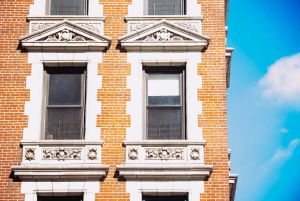Upper East Siders fighting for historic district on Park Avenue heard by landmarks commission. This piece was published Feb. 26 in Our Town.
“No one at the meeting really understood why these areas had not been incorporated into an existing or proposed historic district,” said Slater. “At that time, there was a feeling on the part of the commission that there really was not a perceived threat to Park Avenue, and that the commission had to focus on other boroughs of the city.”
Slater said her group understood the need for historic preservation in other areas of the city, but that “sadly we lost the first of several buildings along Park Avenue shortly after that meeting.”
Upper East Siders supporting historical designation on Park Avenue, who have coalesced under the umbrella name of Historic Park Avenue, had their long-awaited hearing before the LPC last week.
The proposal actually calls for the creation of two historic districts along Park Avenue to fill in the 14-block gap between the existing Carnegie Hill and Upper East Side historic districts. The goal, say supporters, is to protect historic buildings – and the lots on which they sit – from being developed. The two proposed areas run along Park Avenue between 79th Street and 91st Street and 94th Street and 96th Street.
Elected leaders who support the proposal include council members Dan Garodnick and Ben Kallos, as well as Assemblyman Dan Quart, Senator Liz Krueger and Congresswoman Carolyn Maloney.
“There’s no reason to exclude buildings above 79th Street from protection,” said Krueger, who provided a statement to the LPC through a representative.
Over 70 people showed up to testify at the hearing, including representatives of the local elected officials. Garodnick’s office said that of the 68 buildings in the proposed historic district, five are in immediate danger of being developed.
According to Tara Kelly, executive director of the group Friends of the Upper East Side, five buildings have been lost to development since 2010. These buildings were built between 1856 and the mid-1900s, by famous architects such as J.E.R. Carpenter and Rosario Candela, according to members of Historic Park Avenue.
“This important stretch of Park Avenue, along with the Park Avenue Christian Church and parish house, deserves the permanent protection that is offered by landmark designation,” said Kelly. “Thus we ask the commission to act with all possible speed to ensure that these historic buildings are preserved.”
The debate surrounding Park Avenue Christian Church, built in 1911, is one that’s divided residents on the Upper East Side between those who want to landmark the church building and its adjacent parish house and the church administration itself, who say they need to monetize the lot that the parish house is built upon in order to survive.
Valerie Campbell, a lawyer at Kramer & Levin representing the church, said the church supports the creation of a historical district along Park Avenue, but doesn’t want to be included in it because that will prevent them from following through on a deal they have with Extel Development for the parish house lot.
“Park Avenue Christian Church has been a conscientious steward of its church sanctuary for almost 75 years, it has no plans to leave its spiritual home,” said Campbell. “The proposed designation should not be used as a tool to stop a sensitive plan for development that will not result in any adverse impact on the historic sanctuary or any other historic structure proposed inside the district.”
Extel wants to build a 210-foot residential tower that will cantilever over the church itself, a plan that’s infuriated local residents who say it will ruin views of the historic church and is ill-suited to the surrounding architecture. The church’s rationale for seeking the parish house’s exclusion from the historical district is that the building – which used to house a day school – was built in the mid-1960s.
While there’s no shortage of critics of the proposal – former Vermont governor Howard Dean, who grew up next to the church, had a representative at the commission hearing and called the cantilever plan “horrendous” – the decision on whether it goes forward ultimately lies with the city.
The LPC will research Historic Park Avenue’s proposal and issue a designation report, after which the commission will vote on it. From there, the proposal – if it passes – will go to the City Planning Commission for review and another public hearing before being sent to a vote from the City Council.

